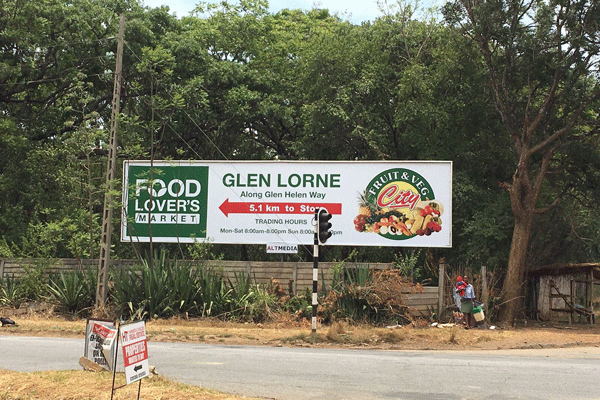
The world is increasingly going digital in all aspects of industry and commerce. This development has not spared the advertising industry which has to diversify from traditional media to incorporate other forms of media, especially mobile technologies.
brand savvy with Stha Magida & Mufaro Zhou

However, even in that traditional media, the advertising agencies should up their game as predictable advertising no longer captures much attention of product consumers.
Zimbabwe primarily uses static billboards for outdoor advertising with a few exceptional innovations like the LED (light-emitting diode) billboard in Newlands or First Street in Harare. LED billboards are still an emerging concept, especially in Zimbabwe where they have not taken off as fast. In the developed world, the digitalisation revolution has not only left technology to be implemented on billboards by the roadside but has gone as far as LED screens on tall buildings and digital bus stop shelters. Such innovations still remain a dream in Zimbabwe within the foreseeable future.
The other day while walking in First Street, I realised the much informative digital billboard was non-functional. I have always found this LED billboard to be the most strategically-laced billboard in Harare, reaching out to all audience classes and age groups. However, even at the time the billboard is working, I have never come across much advertising by large corporates in Zimbabwe. This realisation then pushed me to seek an insight into why such a seemingly lucrative venture was not performing up to expectations. This quest to gain such an understanding opened a discussion with some marketing experts who specialise in projecting corporate products through billboards. The majority of the answers were straight and simple; “Adverts on static billboards are continually available and furthermore projected on a bigger advertising space”. Taking a look at the size of the digital billboard in comparison to the static billboard advertising a bank, both located close to the Newlands bypass traffic lights, supports clearly the marketers’ argument. Other sentiments where that unavailability of power sometimes leads to a compromised service, hence failing to offer value for money, notwithstanding the fact that there is no monitoring mechanism for advert availability on LED billboards.
Add to that, Zimbabwe still has abundant space to mount physical billboards. On the other hand, the country has limited companies competing for advertising space, hence not much pressure to continuously change adverts. Other arguments emphasised that LED billboards have to be restricted to urban environments with high volume and slow-moving traffic or highly-populated areas where they achieve the objective as the advert time span is short. Digital billboard image quality is normally poor due to the weather resistant LED material used, while static billboards mainly rely on daytime light for visibility. Due to the fact that you cannot easily pull down a static adverts, you still find numerous irrelevant material on static billboards as advertising cycles could be three months or longer, for instance, billboard of a product promotion which is long gone or musical show that is in comparison to digital billboards that can be used to counter that setback.
As much as LED billboards are termed to be dynamic and captivating, there is an appealing “static” billboard along Sam Nujoma Street (Belgravia shops) that recently generated huge public interest, undeniably creating a lasting impression. The billboard is indeed a great piece of art and creativity showing unconventional thinking and total commitment by a company in going all out to advertise. The internet is full of the billboard’s great positive reviews with the only “factual” exception being that a black long handle pot should have been used as in almost all homes that’s the top prioritised pot for cooking sadza. However, the red pot on the advert brings some colour and life to the billboard and is also part of the company’s corporate colours, hence driving the message home at the end of the day. I presume in advertising what matters is to eventually occupy a place in the customer’s mind, but how you do it is something else as long as it’s ethical.
The conclusion of the matter is that regardless of how much technology will evolve, electronic billboards will never replace static billboards, hence the two formats will unceasingly co-exist in proportional relationships. The billboard is only but an awareness tool which still needs to be backed up by an efficient and pleasing service to the consumer who decides to buy into the advert. So at the end of the day, be it the ZOL or TelOne billboard that wins the day, the customer will eventually largely subscribe to the most dependable internet connection associated with good customer service, among other factors.
- Chamisa under fire over US$120K donation
- Mavhunga puts DeMbare into Chibuku quarterfinals
- Pension funds bet on Cabora Bassa oilfields
- Councils defy govt fire tender directive
Keep Reading
Till next week, keep reading and remain tech-brand savvy.
l Stha Magida is contactable on [email protected]. Her co-writer is contactable on [email protected]











